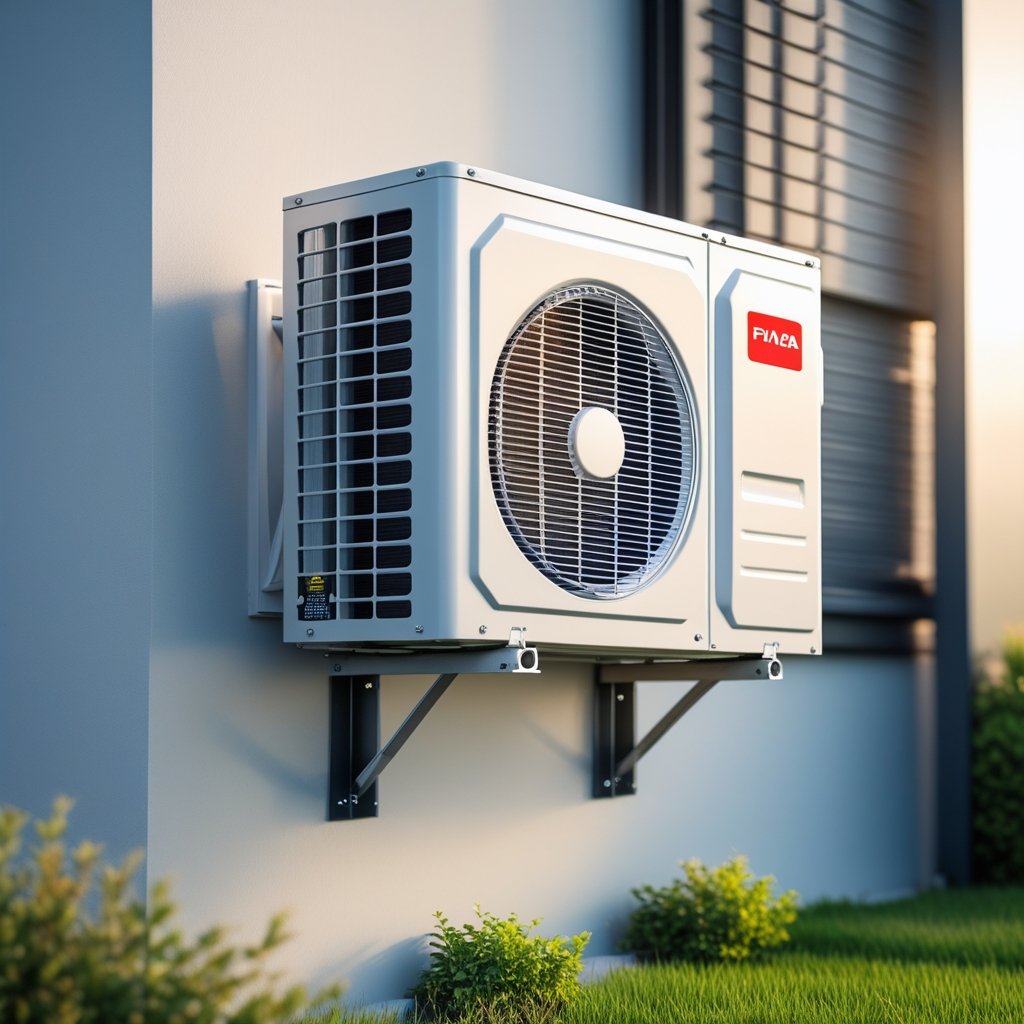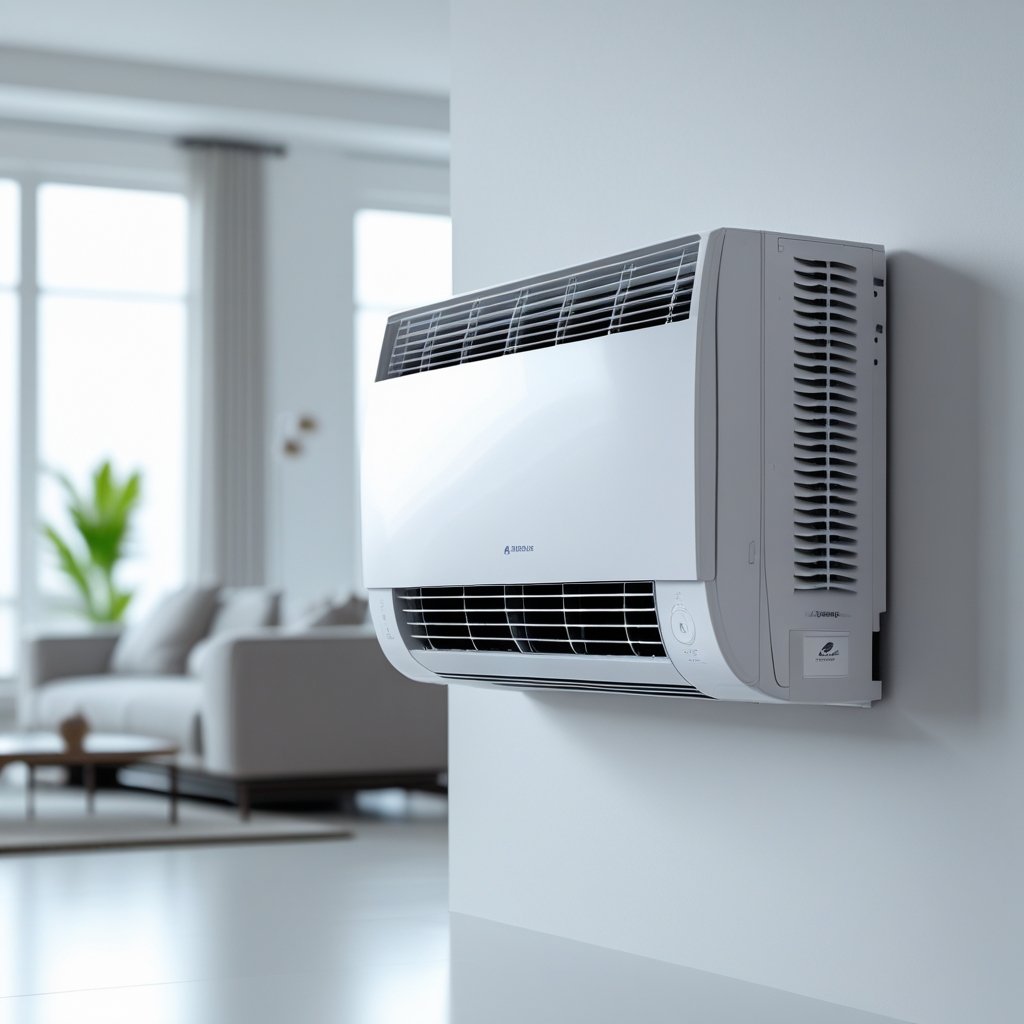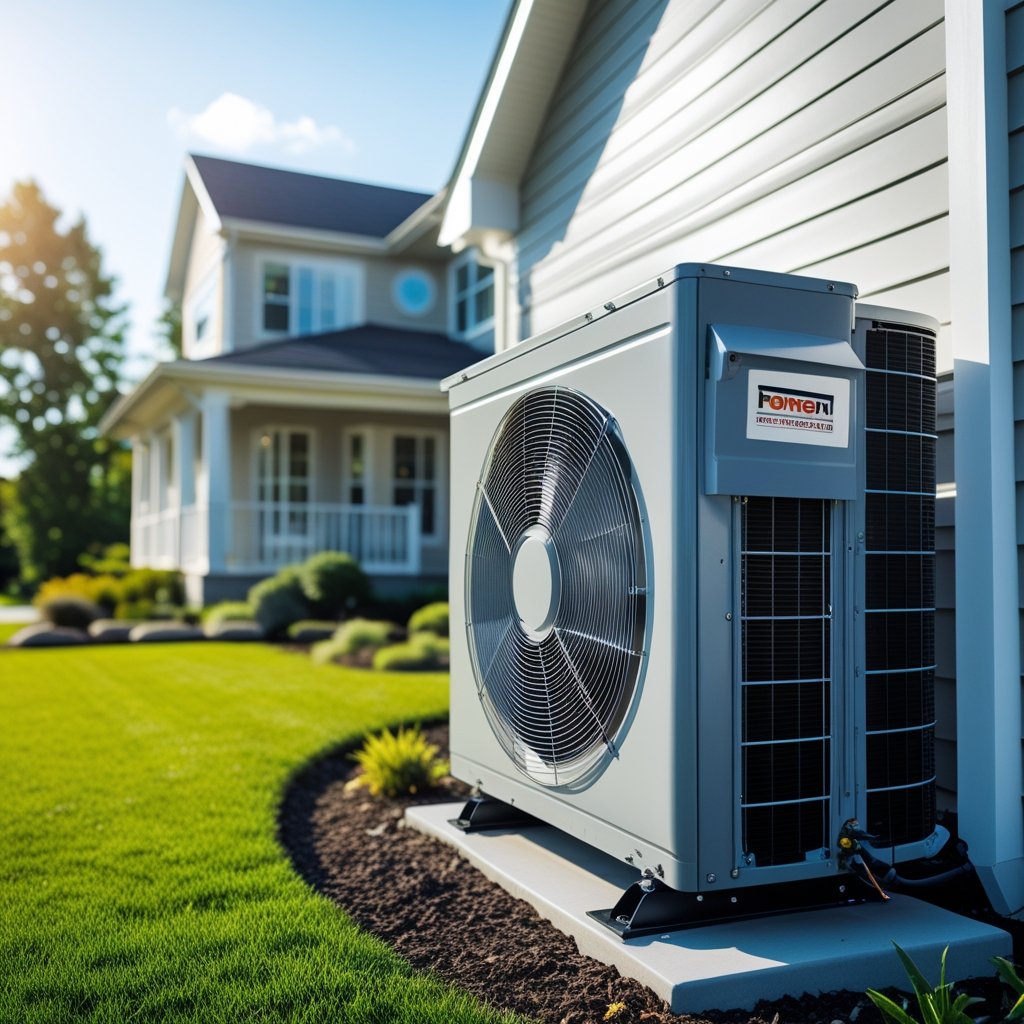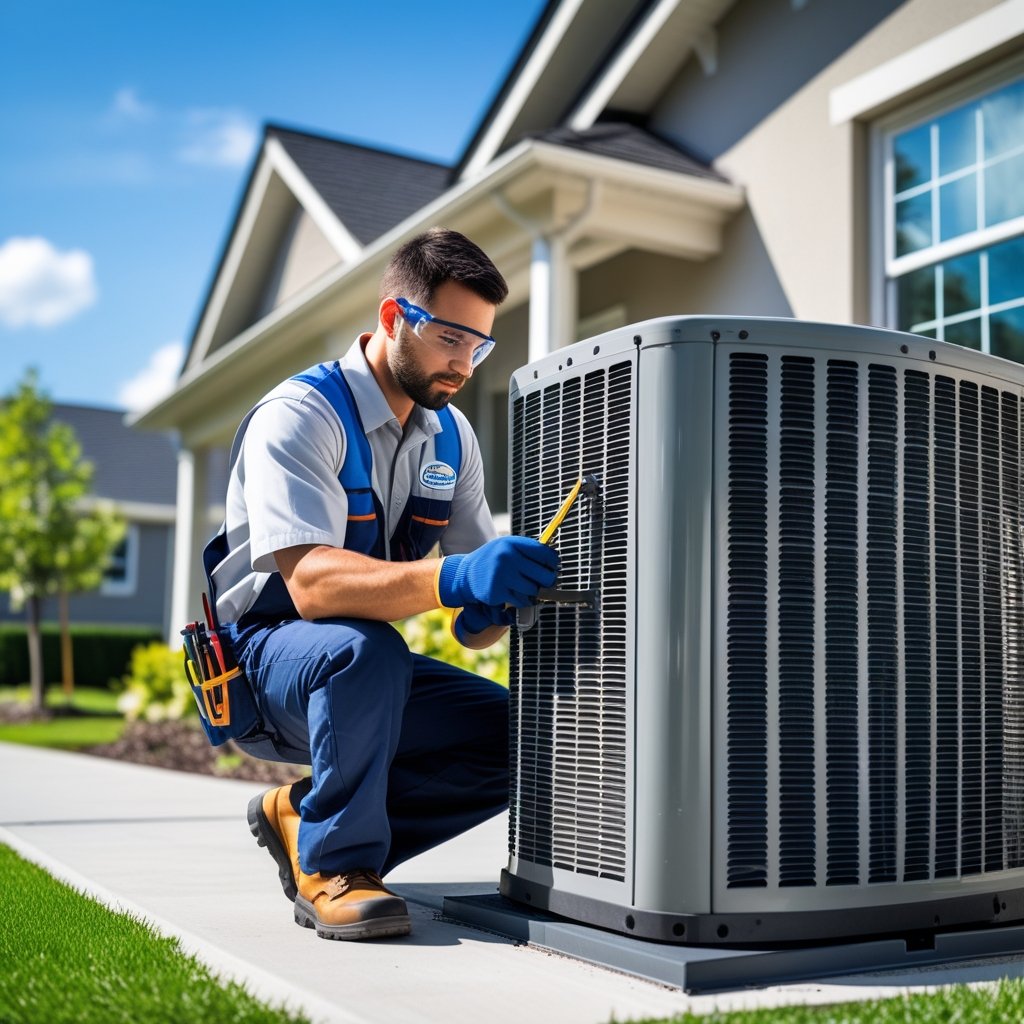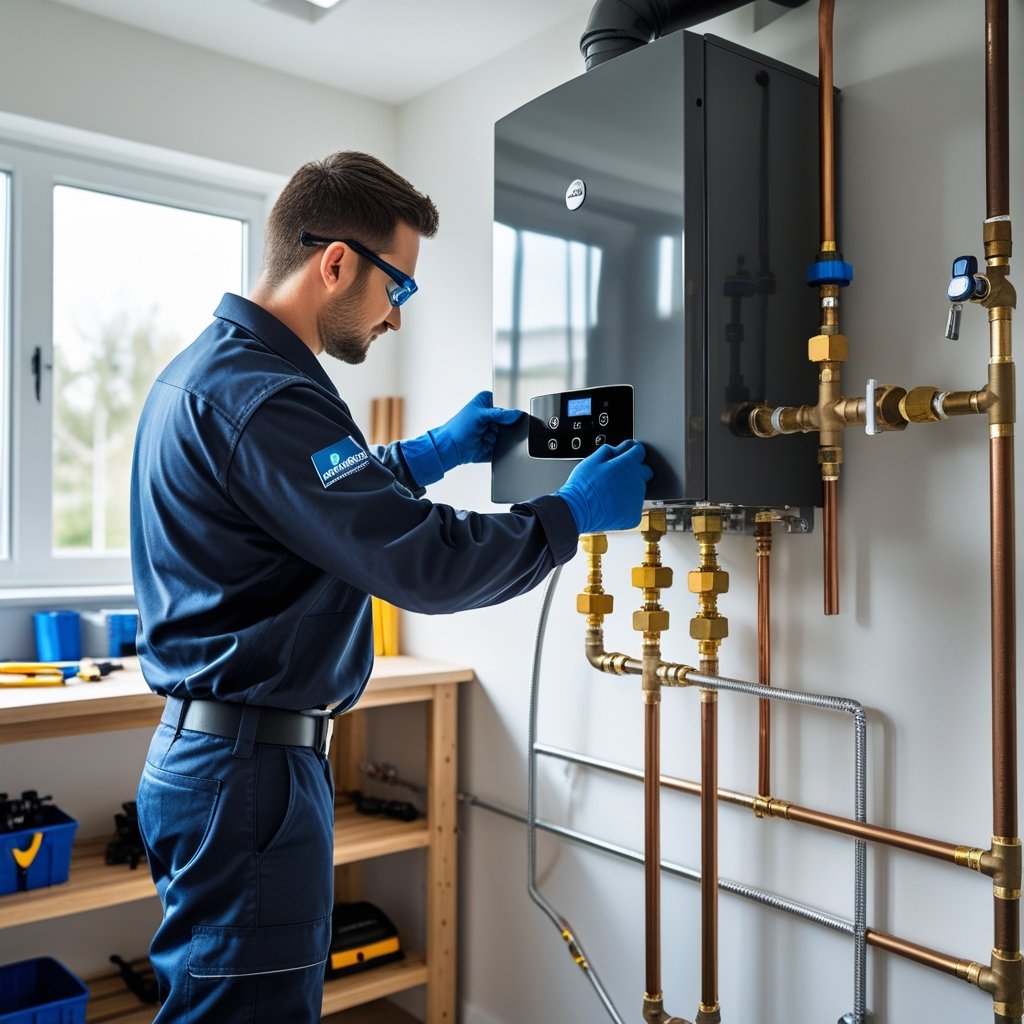A mini split AC system cools individual rooms or small spaces without needing ductwork. It’s made up of an indoor unit and an outdoor compressor, which makes it easy to install and energy efficient. You get more control over your home’s temperature, and you’ll probably save on energy costs compared to traditional central air.
If you want to cool specific areas in your home or office, mini splits are worth considering. They’re quiet, provide both heating and cooling, and honestly, they’re handy all year. At Leo Kob Co., we’ve seen plenty of customers in South Central Pennsylvania enjoy the comfort and savings these systems bring.
Choosing a mini split means you’re going for flexibility and reliability. Whether you’re in Lancaster, Harrisburg, or York, our experienced technicians can help with installation and maintenance to keep things running well.
What Is a Mini Split AC System?
A mini split AC system offers a way to heat or cool your home without ducts. It’s energy-efficient and lets you control the temperature in specific rooms. Once you know its parts and how it works, it’s easy to see why it fits so many homes and businesses.
Definition of Mini Split AC
A mini split AC system has two main parts: an outdoor compressor and one or more indoor air handlers. Unlike central AC, it doesn’t need ducts. That’s a big plus for homes without existing ductwork or rooms that need their own temperature settings.
Each indoor unit runs on its own, so you get customized comfort in different areas. Mini splits use electricity and heat pump technology to cool in summer and heat in winter. They focus energy where it’s needed, which helps you save.
Main Components
Mini splits have three main parts:
- Outdoor compressor/condenser: Sits outside and handles heat exchange.
- Indoor air handlers: Mounted inside, these blow the cooled or heated air.
- Control system: You get a remote, wall controller, or app to manage temperature and fan speed.
The indoor units connect to the outdoor compressor with small refrigerant lines and wiring. No big ducts required, so installation is a lot simpler. There’s also drainage for moisture during cooling.
How Mini Splits Work
Mini splits move heat around instead of creating it. In summer, the outdoor compressor pulls heat from inside your home and dumps it outside. In winter, it reverses the process, bringing heat indoors.
Each indoor unit circulates air over coils cooled or warmed by refrigerant. You can set different temps for each zone, which saves energy and boosts comfort. The system only runs where and when you need it.
Types of Mini Split Systems
Mini split systems come in a few types to match different homes and needs. Some cool or heat just one room, others handle several rooms, all without using bulky ducts.
Single-Zone Systems
A single-zone mini split controls the temperature in one space, like a bedroom or office. It has one indoor air unit hooked to one outdoor compressor.
If you just want to cool or heat a specific room, this is a good fit. You’re not wasting energy on unused areas.
A single-zone system is pretty straightforward to install and usually costs less upfront. It’s great for smaller spaces or places like basements and sunrooms that need extra comfort.
Multi-Zone Systems
Multi-zone mini splits handle several rooms with one outdoor unit and multiple indoor units. Each room’s thermostat works independently, so you can set different temps in different areas.
If you have an open floor plan or several bedrooms, multi-zone systems give you more control and comfort, still without ducts. You only cool the rooms you use most, which saves energy.
Upfront costs are higher than single-zone, but you get custom comfort and may see lower energy bills. Maintenance from companies like Leo Kob Co. keeps these systems working well.
Ducted vs. Ductless Mini Splits
Most mini splits are ductless, so the indoor units blow air right into the room. Installation is easier and there’s less wasted energy from duct losses.
Some mini splits are ducted, using small ducts to deliver air to multiple rooms. They’re quieter and spread air more evenly, and might work for homes where you can run ducts but don’t want a full central system.
Choosing between ducted and ductless depends on your home’s layout and what you want from your system. Ductless is popular for additions or older homes, while ducted fits better in new or remodeled houses.
Key Benefits of Mini Split AC Systems
Mini split ACs bring a bunch of practical perks. You get lower energy bills, flexible options for where to put units, and you can set different temps in different rooms. That flexibility is a big deal for a lot of homeowners.
Energy Efficiency Advantages
Mini splits use less electricity than traditional central AC. No ducts means no energy lost to leaks, so more cooling power actually reaches your room. That’s money in your pocket.
Many mini splits have inverter technology, which lets the compressor speed ramp up or down to match your cooling needs. No more wasteful on/off cycling. You’ll see better efficiency through the year.
Getting your system installed right and maintained regularly by pros like Leo Kob Co. helps it run smoothly. Keeping refrigerant topped off and checking electrical connections really does make a difference.
Flexible Installation Options
Mini splits give you flexible placement since you don’t need big ducts. Indoor units are compact and can go on walls, ceilings, or even floors. This makes them perfect for spots where adding ducts would be a hassle.
You can put a mini split in additions, older homes, or converted spaces with hardly any major changes. The outdoor unit is small and tucks away easily, so it won’t mess up your home’s curb appeal.
This flexibility also means you don’t have to tear up your house. Installation is cleaner and quicker. Leo Kob Co. can help you figure out what setup works best for your space in South Central Pennsylvania.
Zoned Cooling Capabilities
With mini splits, you control the temperature in each room or zone. Only cool the spaces you use and save energy at the same time. Maybe you like bedrooms cooler at night and living areas warmer? No problem.
Each indoor unit has its own thermostat, so you can tweak settings for everyone’s comfort. Zoned cooling avoids wasting energy on empty rooms and works great for families with different preferences.
This kind of control is perfect for multi-story homes or places where rooms get used at different times. It makes life easier and can trim your utility bills.
Installation Process for Mini Split AC Systems
Installing a mini split AC takes some planning to make sure it works efficiently and lasts. The main steps are picking the right location, placing the units, and deciding if you’ll hire a pro or go the DIY route.
Site Selection and Planning
Start by looking at the space where you want the mini split. Measure the room and figure out how much cooling power you’ll need. The system should match your home’s square footage and insulation to avoid wasting energy.
Think about where you’ll put the indoor unit. It should go high on the wall, away from direct sunlight and anything that blocks airflow. That helps with even cooling.
The outdoor unit needs a flat, sturdy spot outside with good airflow and space away from windows or spots where noise might bug you. Planning ahead here really helps everything work better.
Indoor and Outdoor Unit Placement
Mount the indoor air handler high on a wall to spread cool air well. Keep it away from heat sources like ovens or sunlight to keep things efficient.
The outdoor condenser should have open space around it so air can flow. Don’t crowd it with plants or walls. Make sure it’s easy to get to for maintenance.
You’ll run refrigerant and electrical lines through small holes in the wall between the two units. Those need to be sealed up tight to prevent leaks and keep your home insulated.
Professional vs. DIY Installation
You can install a mini split yourself, but it takes some know-how—electrical work, refrigerant handling, measuring, all that. If you mess up, you might end up with a system that doesn’t work right.
Hiring a pro like Leo Kob Co. means the job gets done right. They’ll check out your space, recommend equipment, and make sure everything’s safe and secure. Plus, you usually get a warranty and support.
If you’re set on DIY, follow instructions closely, get the right tools, and check your local codes. But honestly, a lot of homeowners in South Central Pennsylvania find it’s worth paying a pro for the peace of mind and long-term savings.
Comparing Mini Split ACs to Traditional HVAC Systems
Deciding between a mini split AC and traditional HVAC means thinking about how each works, costs, and which one fits your home. Both have their own pros and quirks.
Central AC vs. Mini Split
Central AC cools your whole house through ducts. It’s convenient if you already have ducts, but those can leak and waste energy. Mini splits skip the ducts and send air straight to the room. That gives you zone-by-zone control and can save energy if you don’t need to cool the entire house.
Mini splits also do heating and cooling, and they tend to be quieter than central systems. You get more precise control—handy if some rooms need more or less cooling. Leo Kob Co. can help figure out which system works best for your home’s layout.
Cost Considerations
Mini splits usually cost more upfront, especially if you want several indoor units. But you often save money in the long run since you’re only cooling the rooms you use. Central AC is cheaper to install if you already have ducts, but leaks in those ducts can drive up your bills over time.
Maintenance is different, too. Mini splits need filter cleaning and refrigerant checks, while central AC systems need duct inspections and repairs. With mini splits, you might dodge some pricey duct repairs down the line.
Suitability for Different Homes
Mini splits are great for homes without ducts or for additions and tricky rooms where central AC can’t reach. They’re also a solid pick for older houses and small apartments where ducts just aren’t practical.
Central AC works well if your house already has ducts or you want even cooling everywhere. But if your home has lots of rooms that get used at different times, mini splits give you more flexibility.
If you’re in South Central Pennsylvania, Leo Kob Co. can help you weigh your options and find what works for your place and your budget.
Maintenance and Longevity of Mini Split Systems
Keeping your mini split in shape is pretty straightforward. A few simple tasks go a long way toward helping it last and run well. You’ll want to know how often to do them, how long your system should last, and what to keep an eye out for.
Regular Maintenance Tasks
Clean or replace the air filters every month or two—three at the most. Dirty filters slow airflow and make your system work harder.
Check the outdoor unit now and then for leaves, dirt, or anything that might block airflow. Clear it out. Get a pro to check refrigerant levels and electrical connections once a year.
Give the indoor and outdoor coils a good cleaning every year, too. That helps your system use less energy and keeps your home comfy.
Leo Kob Co. has maintenance plans that cover these checks. Regular upkeep helps you avoid breakdowns and keeps your system running for years.
Expected Lifespan
A well-maintained mini-split system usually lasts around 12 to 15 years. If you clean the filters and schedule professional checkups, you’ll likely hit—or even beat—that mark.
How long your system lasts depends on things like how much you use it, the local climate, and how well it was installed. In South Central Pennsylvania, where winters bite and summers can get sticky, you’ll need to pay a bit more attention to regular care.
Watch for early signs of trouble, like weaker airflow or odd noises. If you catch these issues early, you can avoid bigger headaches and keep your place comfortable.
Troubleshooting Common Issues
If your mini-split isn’t heating or cooling like it should, start by checking the filters and coils. Dirty parts are usually the main culprit behind poor performance.
Check for error codes on the display or look for things like water dripping from the indoor unit. Leaks usually mean a refrigerant or drainage problem.
Uneven temperatures? You might need to adjust the zone controls. Sometimes, a reset or a tune-up from a pro sorts things out.
For trickier problems, it’s best to call Leo Kob Co. Their techs know mini-splits inside and out, and you can count on them to keep things running smoothly.
Popular Applications and Use Cases
Mini split AC systems work in all sorts of spaces where traditional HVAC just doesn’t fit—or makes less sense. They’re flexible, letting you heat or cool specific rooms or areas without much fuss.
Home Additions and Renovations
Adding a new room or remodeling part of your home? Ductwork can be a pain—expensive and messy. Mini splits skip the ducts entirely, making life easier.
You just put a small indoor unit in the new space and hook it up to an outdoor compressor. It’s fast, less invasive, and usually cheaper than tearing up walls for ducts.
The best part? Each room gets its own temperature control. So, if you want that new sunroom a little toastier or cooler, you can do it without messing up the rest of the house.
Garages and Workshops
Garages and workshops are rarely comfy all year. A mini split can make a big difference since you can mount it up high and stay out of the way.
You’ll get solid heating in winter and cool air in summer—without tearing up the place for ducts. That keeps your tools and projects safe from big temperature swings.
They’re also quiet, so you can focus on your work (or your hobbies) without a noisy machine humming away. Leo Kob Co. has put in plenty of these in South Central Pennsylvania garages, and folks seem pretty happy with the results.
Small Apartments and Studios
In small apartments or studios, space is tight. Window units can block light and look clunky. Mini splits are slim, mount high, and keep things tidy.
They don’t need a window slot, so you won’t deal with drafts or extra noise. Installation is quick, and you get efficient heating and cooling without turning your place upside down.
Plus, you can set the temperature for each area—which is great if your living space doubles as your office or bedroom. It just makes things more livable.
Key Features to Consider When Choosing a Mini Split AC
When you’re picking out a mini split AC, think about how well it’ll heat and cool your space, what kind of controls it offers, and how loud it’ll be. These details can make a big difference in your day-to-day comfort.
Cooling and Heating Capabilities
Mini splits can both cool and heat, but you’ll want the right size (measured in BTUs) for your space. Too small? It’ll struggle. Too big? You’ll waste energy.
Some units let you set different temps in different rooms, which is handy and can cut down on your bills. If you’re in a colder area, look for a heat pump option—it’s efficient and doesn’t need extra fuel.
Smart Controls and Connectivity
A lot of mini splits now come with smart controls. You can tweak settings from your phone or even use voice commands. That’s pretty convenient.
Try to find models with scheduling, so the AC only runs when you need it. Some track energy use, too. These features help save energy and keep bills in check. If you’re not sure which one to go for, Leo Kob Co. can help with picking and installing a smart mini split.
Noise Levels
No one wants a loud AC, especially in bedrooms or offices. Mini splits are generally quieter since the compressor sits outside.
Check the decibel rating—19-30 dB is very quiet, about like a whisper. If you’re sensitive to noise, steer clear of louder models.
A good installer will also help by placing the unit where it won’t bother you and making sure it’s mounted to cut down on vibrations.
Frequently Asked Questions
Mini-split AC systems give you precise temperature control and can help save on energy. They work differently than traditional HVAC, and there are a few quirks to know about.
How does a mini-split AC system function?
Mini-splits have an outdoor compressor connected to one or more indoor air handlers. These blow cooled or heated air right into rooms—no ducts needed.
You can set the temperature in each area, so you only heat or cool the spaces you’re using.
What are the potential drawbacks of installing a mini-split system?
Mini-splits cost more upfront than window units or some central AC systems. You’ll need a hole in the wall for the tubing.
If you’re trying to cool a big house, you might need several units, which can make things more complicated and expensive.
Can mini-split systems provide both heating and cooling solutions?
Yep, most mini-splits use heat pump tech, so they can run in reverse and heat your home in winter. When it’s hot, they switch back to cooling.
It’s a nice all-in-one option if you want to keep things simple.
What is involved in the installation process for a mini-split AC?
Usually, the installer mounts indoor units on the wall or ceiling and sets up the compressor outside. They’ll drill a small hole for refrigerant lines, drain tubes, and wiring.
If you want it done right, a pro like Leo Kob Co. will make sure everything runs safely and efficiently.
Is a mini-split system efficient in energy usage?
Mini-splits are built for efficiency. They don’t lose energy the way ducted systems do, so they use less power for the same effect.
Many also have smart zoning, so you’re only cooling or heating the rooms you need. That’s good news for your wallet—and the environment.
How capable are mini-split systems in cooling entire houses?
Mini-splits really shine when you use them for single rooms or smaller open spaces. If you’re trying to cool a whole big house, though, you’ll end up needing several indoor units. That can push installation costs higher than you might expect.
Got a bigger house or lots of separate rooms? You might want to look into central AC, or maybe mix and match with a few mini-splits—depends on what you’re after, honestly.

